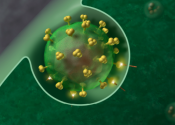New research shows HIV can lie dormant in the brain
As a part of its life cycle, the human immunodeficiency virus-1 (HIV) inserts a copy of its DNA into human immune cells. Some of these newly infected immune cells can then transition into a dormant, latent state for a long ...
Jun 16, 2023
0
28








